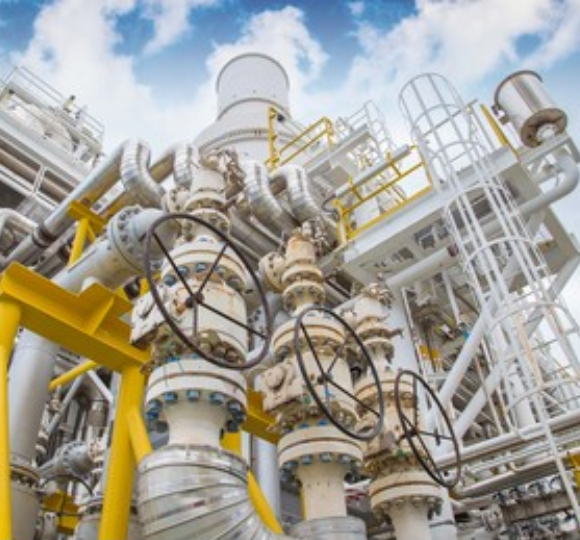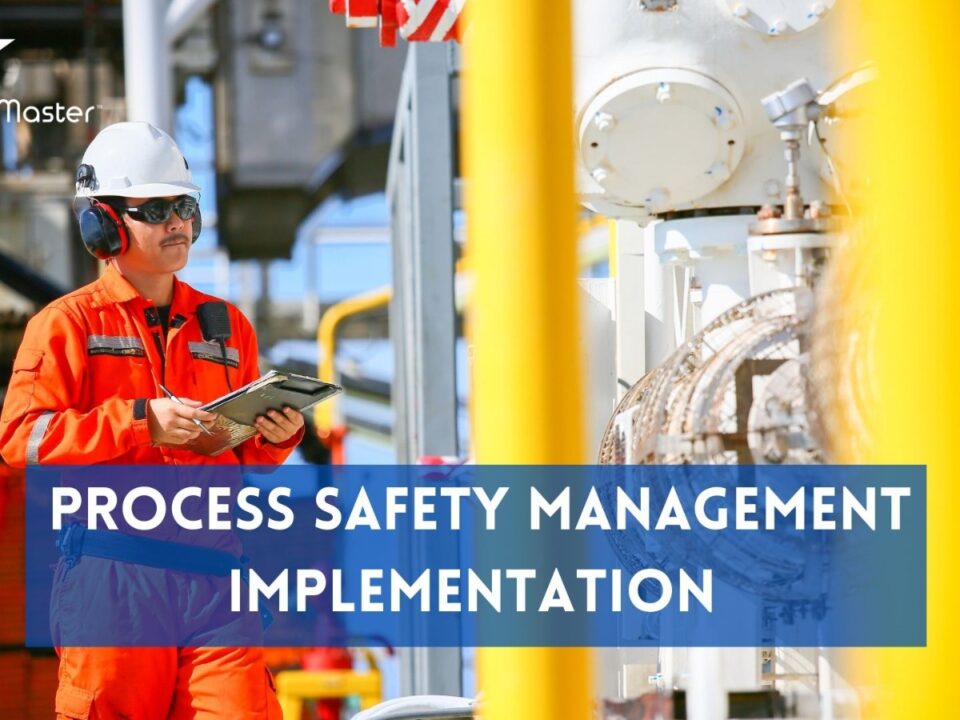Understanding Process Hazard Analysis: A Critical Component of Industrial Safety
The Art of Behavior-Based Safety Training: Building a Resilient Workforce
July 20, 2023
Top Safety Training Consultant
July 21, 2023Understanding Process Hazard Analysis: A Critical Component of Industrial Safety
In this article, we delve into an essential aspect of industrial safety that cannot be undermined in any organizational setup: Process Hazard Analysis (PHA). As industries continue to evolve and expand, ensuring the safety of workers and the surrounding environment becomes paramount. We aim to shed light on the critical importance of PHA and its invaluable contribution to mitigating risks and preventing potential disasters. By the end of this comprehensive exploration, you will gain a thorough understanding of the PHA process, empowering you to enhance safety measures within your organization effectively. Get ready to unlock the key to industrial safety excellence. Let’s dive in!
Introduction
Industrial safety is a paramount concern in today’s world, where the well-being of workers and the surrounding environment cannot be compromised. With hazardous materials, complex processes, and potential risks, it becomes crucial for industries to adopt proactive measures for ensuring safety. This is where Process Hazard Analysis (PHA) plays a pivotal role. In this comprehensive article, we will delve into the depths of PHA, exploring its significance as a critical component of industrial safety.As readers embark on this enlightening journey, they can expect to gain a profound understanding of how PHA functions within industrial settings. We will unravel the intricacies involved in conducting a PHA study and highlight its importance in identifying and mitigating potential hazards effectively. Furthermore, we promise to shed light on the benefits that come hand-in-hand with implementing PHA measures – assuring both industries and workers alike that a safer environment is well within reach
The Importance of Safety in Industrial Environments
Safety in industrial environments is of paramount importance, as it ensures the well-being of workers and safeguards against potential disasters. In these highly complex and potentially hazardous settings, where machinery hums with energy and chemicals flow with precision, the stakes are high. The significance of safety in industrial environments cannot be overstated; it is the bedrock upon which productivity and efficiency thrive. By prioritizing safety, companies create an environment that fosters trust, confidence, and employee satisfaction – a valuable recipe for success. Thus, understanding the importance of safety in industrial environments becomes a crucial responsibility for all stakeholders involved in these dynamic industries.
What is Process Hazard Analysis (PHA)?
Process Hazard Analysis (PHA) is an indispensable tool used in the field of industrial safety to identify and mitigate potential hazards in complex industrial processes. At its core, PHA aims to systematically examine every aspect of a process, from start to finish, considering various scenarios and potential risks. By conducting a thorough analysis, engineers and safety professionals gain valuable insights into the potential hazards that can arise during manufacturing operations.PHA involves a multidisciplinary approach that combines engineering expertise, industry standards, and risk assessment methodologies. It requires meticulous examination of process equipment, chemicals involved, operating procedures, and external factors that might impact safety. Through this detailed evaluation, PHA not only identifies potential hazards but also helps determine their severity and likelihood of occurrence.
Implementing PHA provides organizations with a comprehensive understanding of the risks associated with their processes. This knowledge enables them to develop effective strategies for hazard prevention or mitigation. By proactively addressing potential issues before they occur, industries can create safer working environments that protect employees while promoting productivity and efficiency. Ultimately, Process Hazard Analysis serves as a crucial pillar in ensuring the well-being of both workers and the smooth functioning of industrial operations.
The Role of PHA in Industrial Safety
Process Hazard Analysis (PHA) plays a pivotal role in ensuring the safety and well-being of industrial environments. It serves as a proactive tool that helps identify, evaluate, and control potential hazards before they escalate into major incidents. By systematically analyzing various processes, PHA enables organizations to minimize risks and prevent accidents.
Through PHA, industries gain valuable insights into the potential hazards associated with their operations. It allows them to identify any design flaws or operational vulnerabilities that may compromise safety. Moreover, by evaluating the likelihood and consequences of potential incidents, PHA provides a comprehensive understanding of risk levels, enabling organizations to prioritize resources for mitigation.
Personnel Involved in PHA Implementation
The effective implementation of Process Hazard Analysis (PHA) requires a diverse team of experts, each contributing their specialized knowledge and skills. These individuals are crucial in ensuring that all aspects of the industrial process are thoroughly evaluated for potential hazards. The PHA team typically consists of process engineers, safety professionals, operations personnel, and subject matter experts
By bringing together this diverse group of professionals, PHA implementation becomes a collaborative effort rooted in collective expertise. This multifaceted approach ensures that all possible risks are identified and mitigated effectively, leading to improved safety outcomes within industrial environments. Through this collaborative effort, industries can inspire confidence by demonstrating their commitment to protecting both workers and the surrounding community from harm.
Steps Involved in Conducting a PHA Study
The process of conducting a PHA study involves a meticulous and systematic approach to ensure all potential hazards are identified and addressed. This begins with assembling a team of competent individuals who possess diverse expertise and knowledge to thoroughly evaluate the industrial processes. These professionals may include engineers, safety specialists, operators, and relevant stakeholders.The first step in the PHA study is to gather essential information about the process under examination. Detailed descriptions of equipment, materials, operating conditions, and process flow diagrams are collected to provide a comprehensive understanding. This facilitates the identification of potential hazards such as chemical reactions, leaks, or equipment failures.
By following these well-defined steps in conducting a PHA study, industries can minimize risks significantly and create safer work environments for their employees. Taking proactive measures not only enhances operational efficiency but also highlights a commitment towards employee well-being and ensures long-term success for businesses
Identifying and Analyzing Hazards in Industrial Processes
In the realm of industrial safety, identifying and analyzing hazards in industrial processes is a crucial step towards ensuring a secure working environment. This intricate task involves meticulous scrutiny of every aspect of the process, from raw materials to equipment and procedures. By carefully examining each element, potential risks can be unearthed and subsequently mitigated. During the hazard identification phase, experts delve into the minutiae of industrial processes, seeking out any factors that could potentially pose a threat to personnel or property. They meticulously scrutinize chemical reactions, equipment malfunctions, human errors, and external factors such as weather conditions or seismic events. This comprehensive examination ensures that no stone is left unturned in the pursuit of safety.
Analyzing these identified hazards is equally vital in order to evaluate their severity and likelihood of occurrence. Experts rely on various techniques such as fault tree analysis or failure mode and effects analysis to quantitatively assess the potential risks associated with each hazard. By taking a systematic approach towards risk assessment, companies can allocate resources efficiently to address high-priority hazards while also implementing preventive measures for those with lower risks.
By dedicating thorough attention to identifying and analyzing hazards in industrial processes, companies not only fulfill their obligation towards employee safety but also pave the way for enhanced productivity and success. A workplace free from unforeseen dangers instills confidence among employees leading to increased motivation and job satisfaction. Ultimately, this commitment towards comprehensive hazard analysis fosters an environment where everyone can thrive harmoniously while achieving collective goals
Risk Assessment and Mitigation Strategies
Within the realm of industrial safety, risk assessment and mitigation strategies play a pivotal role in ensuring the well-being of workers and the integrity of processes. Risk assessment involves the identification and evaluation of potential hazards, determining their likelihood of occurrence, and assessing the severity of their potential impact. It is essential to comprehensively analyze each hazard’s characteristics to understand its root causes, contributing factors, and potential consequences.
Once hazards have been identified through a thorough process hazard analysis (PHA), effective mitigation strategies can be implemented. These strategies aim to reduce or eliminate risks by implementing control measures that address the specific hazards identified. Control measures can include engineering controls such as improved equipment design or ventilation systems, administrative controls like standard operating procedures and training programs, or personal protective equipment requirements.
By embracing proactive risk assessment practices and implementing robust mitigation strategies, industrial environments can significantly enhance safety levels. Not only does this protect workers from harm, but it also promotes a culture of accountability and responsibility within the organization. Ultimately, investing in comprehensive risk assessment methodologies ensures that industrial processes operate smoothly while fostering an environment where employees feel safe and valued.
The Benefits of Implementing PHA in Industrial Settings
By embracing Process Hazard Analysis (PHA) in industrial settings, companies unlock a plethora of invaluable benefits. Firstly, PHA acts as a proactive approach to risk assessment, enabling organizations to identify potential hazards and mitigate them before they manifest into catastrophic incidents. This not only safeguards the well-being of workers but also protects valuable assets and minimizes production downtime.
Secondly, implementing PHA fosters a culture of safety consciousness within the workforce. By involving employees in the analysis process, it empowers them to understand and actively contribute to hazard identification and mitigation strategies. This collaborative approach nurtures a sense of ownership and responsibility, creating a positive work environment where safety takes precedence.
Furthermore, an effective PHA system enhances overall operational efficiency within industrial environments. Through detailed analysis of processes and identification of potential bottlenecks or inefficiencies, companies can streamline their operations to optimize productivity while maintaining stringent safety standards. This leads to improved profitability and sustained growth for businesses in the long run.
In conclusion, embracing Process Hazard Analysis offers significant advantages for industries aiming to prioritize safety while optimizing operations. By proactively identifying hazards, nurturing a culture of safety consciousness among employees, and streamlining processes for enhanced efficiency, companies can establish themselves as leaders in both workplace safety and business success.
Conclusion
In conclusion, it is evident that Process Hazard Analysis (PHA) plays a pivotal role in ensuring the safety and well-being of workers in industrial settings. Through meticulous examination of processes, identification of hazards, and implementation of effective risk mitigation strategies, PHA empowers organizations to prevent accidents and protect their workforce. By prioritizing industrial safety and investing in PHA practices, companies can create a culture of security where employees can thrive without the constant fear of potential dangers. Ultimately, embracing PHA as a critical component of industrial safety leads us towards a future where workplaces are not just productive but also havens for the flourishing of human potential.
At TSM TheSafetyMaster Private Limited we offer following services
Process Safety Management Implementation
TSM TheSafetyMaster® Private Limited
Unit No 221-451-452, SPL1/J, 2nd & 4th Floor, Sunsquare Plaza Complex, RIICO Chowk, Bhiwadi 301019, Rajasthan, India
Phone: +91 1493 22 0093
Mobile: +91 7665231743/9413882016
Email: info@thesafetymaster.com




